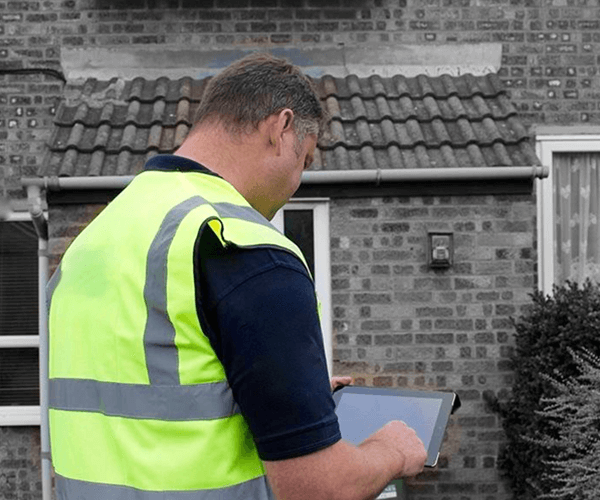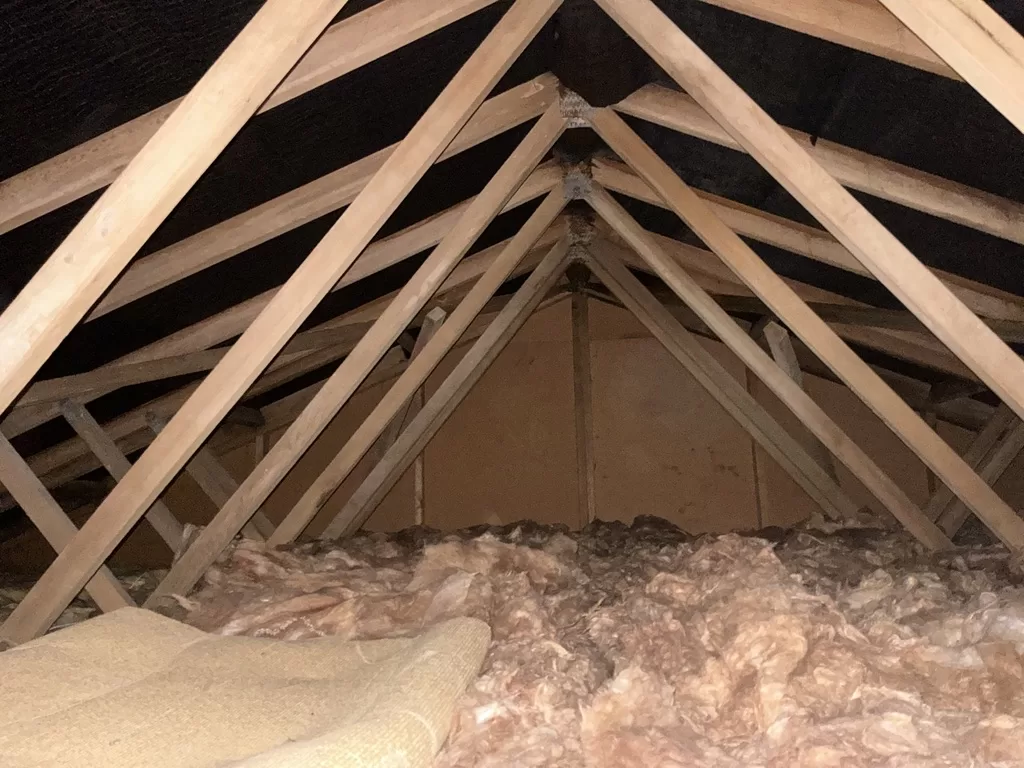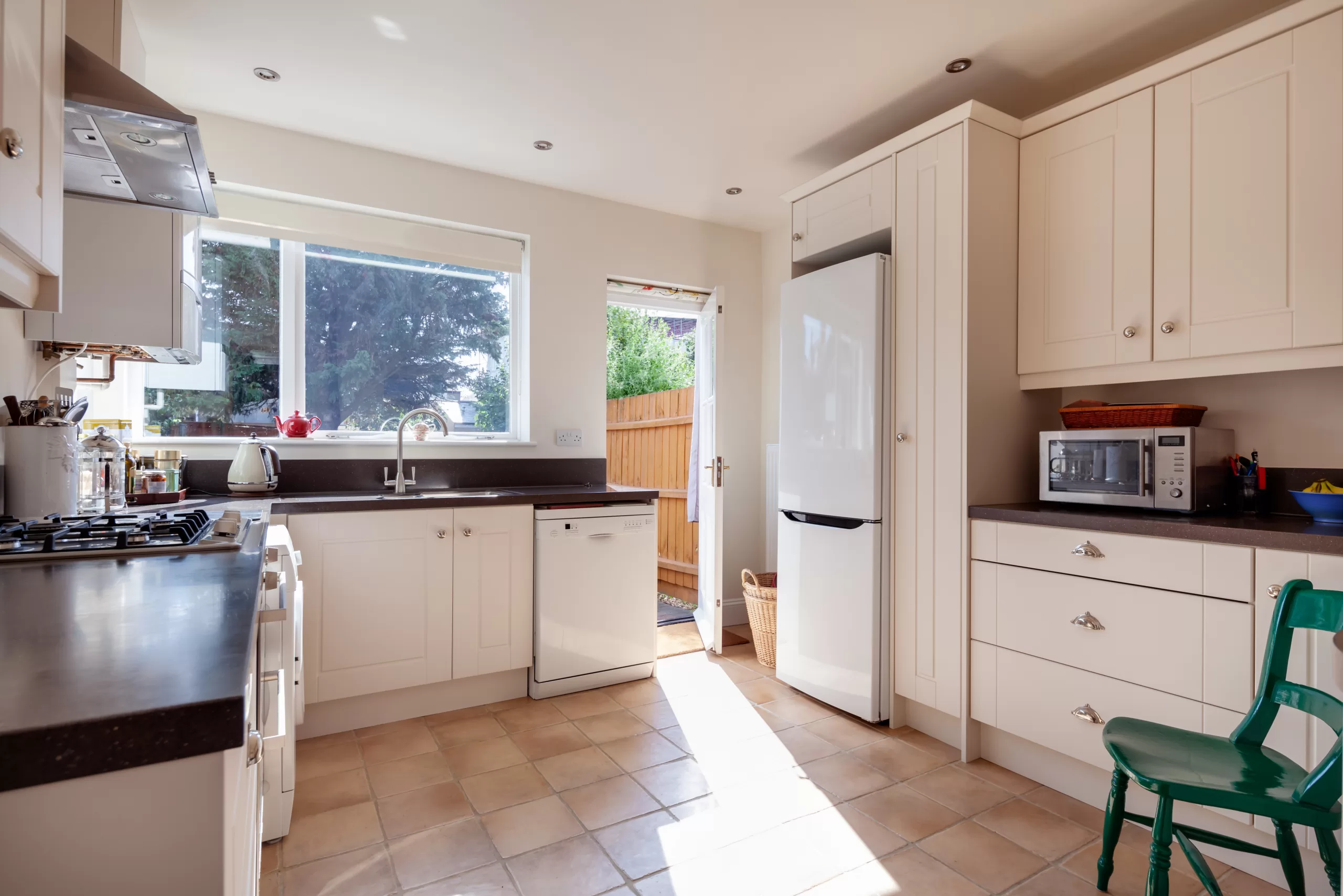Essential DEA Equipment
When carrying out Domestic Energy Assessments, having the right equipment is essential. It makes inspections faster, safer, and ensures measurements are accurate.
Over the years, I’ve developed a toolkit covering every situation a DEA encounters — from awkward roof rooms to managing paperwork efficiently.
I also offer one-to-one DEA mentoring, providing guidance on using your tools efficiently, handling assessments professionally, and streamlining workflows for both new and experienced assessors. Techniques learned here are applied in all my Domestic Energy Assessment services.

Essential Tools at a Glance
Here’s a checklist of the core DEA equipment you’ll need. Click on each item to view recommended options on Amazon:
- Laser Measurer – Accurate wall and room measurements.
- Folding Carpenter’s Ruler – Ideal for wall thickness and loft insulation measurements.
- Tape Measure – If you prefer a retractable tape we always recommend a Stanly Fat Max.
- Extending Ladder – Safe access to loft space, this fits in the boot of most cars.
- Rechargeable Torch – Essential for checking loft insulation and low-light areas.
- Dust Mask – Protection when entering lofts or dusty spaces.
- Overshoes – Keeps client properties clean, these are washable and non slip.
- Bump Cap – Head protection for low beams in lofts.
- Glazing Gap Gauge – Accurate window thickness measurements.
- 4 Colour Pens– I used these for annotating my floor plans, using the different colours for HLP, PW and extensions.
- Graph Paper – Ideal to sketch floor plans and make site notes.
- A4 Grid Sheets – Draw horizontal and vertical straight lines freehand when placed under a plain sheet of paper.
- Folders & Wallets – Organise paperwork efficiently when on site.
- iPad – I now use an iPad to complete my reports on-site, captures everything you need, including the floor plan.
- iPad Cover – Makes the iPad easy to hold and protects from bumps and scrapes.
- Fire Brigade Keys – Handy for accessing meter cupboards in communal areas when assessing flats
- Meter Box Key – Does what it says in the tin, access meter boxes.
- Loft Hatch Key – Handy for newer properties where the loft hatch often needs a square end key to open it, don’t use a plastic one as they can snap.
- Batteries – Always keep spares for your laser measure.
(*Please note as an Amazon Associate we do earn a small commission fee from qualifying purchases made using our links.)
Detailed DEA Equipment Breakdown
Laser Distance Measurer
- What it does: Takes quick, accurate room and wall measurements.
- Why it matters: Speeds up assessments and improves report accuracy.
- Tip from experience: Always carry spare batteries for uninterrupted use.
- View recommended laser distance measurer on Amazon
Folding Carpenter’s Ruler
- What it does: Measures wall thickness and loft insulation depths.
- Why it matters: Easier than a tape measure as it doesn’t flop!
- Tip from experience: You can stand the ruler up in the loft insulation making it easier to take you pictures.
- View our recommended folding ruler on Amazon
Tape Measure
- What it does: Manual measuring tape if you don’t like the folding ruler.
- Why it matters: Useful for wall thickness and loft depth measurements.
- Tip from experience: A 5m or 8m tape is usually sufficient.
- View reliable tape measure for DEAs on Amazon
Extending Ladder
- What it does: Provides access to loft hatches.
- Why it matters: Easy to transport and set up; using a properly rated ladder prevents accidents.
- Tip from experience: Always ensure the ladder is stable and fully locked before climbing, and mind your fingers when closing.
- View adjustable extending ladder on Amazon
Torch
- What it does: Illuminates low-light areas such as cupboards, roof rooms, or under stairs.
- Why it matters: Proper lighting ensures accurate inspection and measurement, prevents misreading features, and increases safety.
- Tip from experience: Choose a compact, bright LED torch with a rechargeable battery for reliability.
- This mini version is really good if you want something compact.
- View high-quality torch for inspections on Amazon
Dust Mask
- What it does: Protects you from dust and particles in lofts or dusty roof spaces.
- Why it matters: Safety and hygiene are important; reduces exposure to irritants and shows professionalism.
- Tip from experience: Keep several disposable masks in your kit and replace them regularly.
- View protective dust mask for DEAs on Amazon
Overshoes
- What it does: Covers shoes to prevent dirt, mud, or debris from being transferred into client properties.
- Why it matters: Shows respect for client homes, maintains professional standards, and protects flooring.
- Tip from experience: Always put them on immediately when entering a property.
- View non-slip overshoes for client properties on Amazon
Bump Cap
- What it does: Provides head protection in spaces with low beams or sloped ceilings.
- Why it matters: Reduces the risk of minor injuries and demonstrates a commitment to safety.
- Tip from experience: Lightweight bump caps are comfortable for long periods without restricting movement.
- View lightweight bump cap for safety on Amazon
Glazing Gap Gauge
- What it does: Measures the width of window glazing cavities accurately.
- Why it matters: Accurate measurements are critical for assessing insulation performance and producing precise EPC reports.
- Tip from experience: Keep the gauge clean.
- View precise glazing gap gauge on Amazon
Pens & Graph Paper
- What it does: Quickly sketch floor plans, note measurements, and track inspection details manually.
- Why it matters: Even with digital tools, pen and paper provide backups and rapid reference notes.
- Tip from experience: Use a consistent colour-coding system to separate measurements, notes, and observations.
- View DEA graph paper and pens on Amazon
Folders
- What it does: Organises paperwork, certificates, and loose documents during assessments.
- Why it matters: Keeps documents safe, orderly, and easy to access, reducing errors and lost paperwork.
- Tip from experience: Having a laminated set of conventions in the folder can be useful.
- View durable folders for paperwork on Amazon
iPad
- What it does: Enables digital data entry, on-site report completion, and storage of floor plans and measurement notes.
- Why it matters: Reduces paperwork, improves accuracy, and allows for faster, professional report production.
- Tip from experience: Use a rugged case to protect your device and back up your data regularly.
- View iPad for assessments on Amazon and the rugged iPad case I use every day.
How to Use Your DEA Equipment Effectively
- Plan Before You Step Inside – Review floor plans and plan your measurement route.
- Use the Right Tool for the Right Job – Laser for open rooms; folding ruler or tape for wall and insulation thickness.
- Complete each room in full before moving on. Take all measurements first, then record details of heating systems, lighting, windows, and insulation in the same room. This ensures nothing is missed and reduces the risk of backtracking.
- Keep PPE Accessible – Dust mask, bump cap, and torch ready before entering lofts.
- Protect Client Property – Use overshoes to keep floors and carpets clean.
- Record as You Go – Enter data on your iPad or tablet while on-site.
- Maintain DEA Equipment Regularly – Check ladders, clean lenses, and store tools properly.
Mentoring Tip: One-to-one DEA mentoring can help you optimise workflow, making inspections faster, safer, and more accurate.
Stories from the Field
Over thousands of assessments, I’ve developed a routine that keeps every job consistent and efficient. Preparation is always the first step — using resources like Rightmove, the Valuation Office Agency, FENSA and other tools means I walk into a property already familiar with its layout and features. (Watch my YouTube videos on how I prepare for assessments).
On site, I start outside and then work methodically through each room, following the same sequence each time. This approach ensures that nothing is missed, and every detail — from measurements to heating systems, windows, and insulation — is recorded in a logical order.
As a trainer and mentor, I’ve refined these methods further by teaching them to others. Mentoring forces you to think critically about the “why” as well as the “how,” which has made my process even more robust. For newly qualified DEAs, this structure can feel like a lifeline. With the right guidance, you quickly turn these steps into second nature, giving you the confidence to walk into any property knowing exactly what to do, in what order, and why. My mentees often say that adopting this system, along with using the correct DEA Equipment, was the turning point from feeling overwhelmed to working with real confidence and efficiency.
If you’re a newly qualified DEA looking for structure, support, and proven workflows, find out more about my mentoring services.
Frequently Asked Questions about DEA Equipment and Mentoring
Ready to Take the Next Step?
Whether you are in the initial stages of training as a Domestic Energy Assessor, have recently obtained your qualifications, or are an experienced DEA, our mentoring programme can be customised to address your specific requirements. Take advantage of our tips and tricks, gained over 10 + years in the industry, to enhance your process, improve your quality and increase your productivity. Our mentoring services are your pathway to success in the energy performance certificate business.
Contact us today to schedule a consultation and kickstart your journey to becoming a highly skilled and sought-after DEA.

*Please note as an Amazon Associate we do earn a small commission fee from qualifying purchases made using our links.




